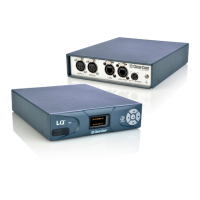7 Internet connectivity
All devices within a Link-Group must have connectivity to the Link-Master on TCP
port 80. When linking devices over the Internet, make sure that this connectivity is
stable. Internet connection to an LQ device requires special configuration within
your firewall (port-forwarding).
7.1 Getting an external IP address
When networking LQ devices over the Internet, an external IP address is required
as a first step in making sure Link-Members can reach the Link-Master. The
external (public) IP address must be static and non-changing. Normally an Internet
Service Provider (ISP) will provide external addressing in Dynamic Host
Configuration Protocol (DHCP) mode. This is not guaranteed to remain static but
instead will change periodically. This will cause linking issues as the LQ devices
will not be able to reach the master if the IP address changes. Therefore, it is
suggested that you purchase a static address from your ISP. Failure to do this
could result in a loss of service.
Note: Another alternative is to maintain DHCP addressing but use the Address
Reservation feature available in most managed routers. This will instruct the router
to allocate a specific DHCP address to an LQ device identified by its MAC address.
The unit’s MAC address can be retrieved through the LQ's front panel menu
.
7.2 Port-forwarding
In order to facilitate connectivity to an LQ unit that is behind a firewall, certain
ports need to be mapped from your firewall to the LQ device. This mapping will
forward traffic received on those ports from the Internet directly to the LQ unit.
• The Link-Group uses TCP port 80 for link initiation and Web management.
• All the units use port 655 (TCP and UDP) for group connectivity and audio
transmission.
External (public) IP
Link-Master
Link-Member
LAN,WAN,
Internet

